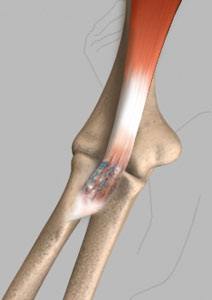Biceps Tendon Repair

The biceps muscle, located in the front of the upper arm allows you to bend the elbow and rotate the arm. Biceps tendons attach the biceps muscle to the bones in the shoulder and in the elbow.
What are the Types of Bicep Tendon Tears?
Biceps tear can be complete or partial. Partial biceps tendon tears will not completely break the tendon. Complete tendon tears will break the tendon into two parts.
Biceps tendon tears at the shoulder: Two tendons that attach the biceps muscle to the bones in the shoulder, the long-head tendon that attaches the muscle to the top of the shoulder's socket (glenoid) and the short-head that attaches it to the shoulder blade. Tears are more likely to occur in the long-head of the biceps tendon. Tears of the short-head of the biceps are very rare. But even in case of a complete tear of the long-head, the short-head of the biceps may allow you to continue using your biceps muscle.
What are the Causes of Bicep Tendon Tears?
Biceps tendon tear can be caused by injury such as falling down with your arm outstretched or during the act of lifting heavy objects. In case of overuse, a tendon may fray and eventually tear. Other shoulder problems such as tendonitis, shoulder impingement, and rotator cuff injuries are more likely to weaken or tear the biceps tendon. Additional risk factors such as advancing age, heavy overhead activities, repetitive overhead sports, smoking, and use of corticosteroids can also result in a tendon tear.
What are the Treatment Options?
Conservative treatment for a proximal biceps tendon tear includes ice application, limiting activity, non-steroidal anti-inflammatory medications to reduce the pain and keep the swelling down. To restore the mobility and strengthen the surrounding muscles, your doctor may prescribe certain flexibility and strengthening exercises.
Surgery
Surgery to reattach the torn tendon back to the bone is rarely needed. However, for patients with partial tears who continue to experience symptoms after non-surgical treatments or who want all of their arm strength back, such as athletes or manual laborers, surgery may be the best option. Complications are rare and a re-tearing of the repaired tendon is rare. Following surgical repair, you will need to do flexibility and strengthening exercises to improve the range of motion in your shoulder.
Your surgeon may opt for several surgical procedures for distal bicep tendon tear where the distal biceps tendon is reattached to the forearm bone. Some doctors would instead use two incisions, while some use only 1 incision. Both procedures carry certain advantages and disadvantages. During the procedure, the tendon is attached with stitches through holes drilled inside the bone or small metal implants may be used to attach the tendon to the bone.
What are the Associated Risks and Complications?
Complications are rare and may include numbness and weakness in the forearm, formation of new bone, limited movement, and a re-tear may occur.

